The 11th edition of Fundamentals of Anatomy and Physiology serves as a comprehensive guide for understanding human structure and function‚ offering updated visuals‚ research‚ and a student-focused approach․
1․1 Overview of the 11th Edition
The 11th edition of Fundamentals of Anatomy and Physiology by Frederic H․ Martini‚ Judi L․ Nath‚ and Edwin F․ Bartholomew provides a detailed exploration of human structure and function․ Published by Pearson‚ this edition is available in multiple formats‚ including PDF‚ e-books‚ and hard copies‚ catering to diverse learning preferences; It features enhanced visuals‚ updated research‚ and a student-centered approach to facilitate understanding․ The textbook covers 29 chapters‚ spanning from basic chemistry to complex systems like the nervous and circulatory systems․ Digital resources‚ such as test banks and teaching modules‚ accompany the text‚ making it a comprehensive tool for both students and instructors in medical and allied health education․
1․2 Importance of Anatomy and Physiology in Medical Education
Anatomy and physiology are foundational sciences in medical education‚ providing the knowledge needed to understand the structure and function of the human body․ These disciplines form the basis for diagnosing and treating diseases‚ as they link the body’s structure to its functional processes․ Studying anatomy and physiology equips healthcare professionals with the ability to identify abnormalities and develop effective treatment plans․ It also fosters critical thinking and problem-solving skills‚ essential for clinical practice․ The 11th edition of Fundamentals of Anatomy and Physiology supports this learning by integrating clinical applications and real-world scenarios‚ making it a vital resource for students and practitioners alike․
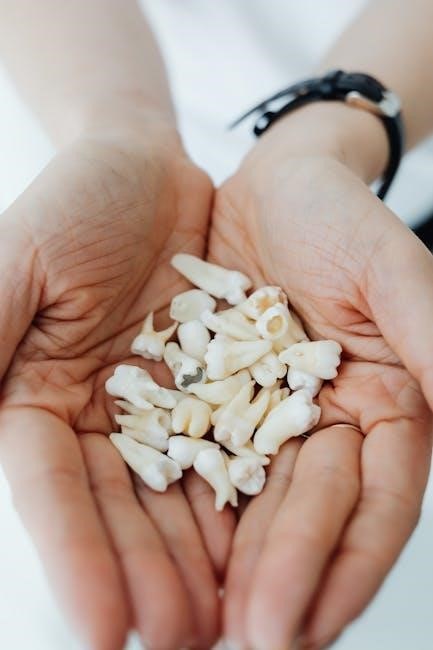
Key Features of the 11th Edition
Key features include comprehensive updates‚ enhanced visuals‚ and interactive learning tools‚ ensuring a dynamic and engaging educational experience for students and educators alike․
2․1 Enhanced Visuals and Illustrations
The 11th edition boasts enhanced visuals and illustrations‚ including detailed anatomical diagrams‚ 3D models‚ and histology images․ These visuals are meticulously updated to reflect current scientific understanding‚ aiding students in grasping complex concepts․ Full-color artwork‚ cross-sectional views‚ and flowcharts simplify intricate physiological processes‚ making learning more engaging․ Micrographs and MRI/CT scans provide real-world applications‚ bridging the gap between textbook learning and clinical practice․ The illustrations are designed to complement the text‚ ensuring a seamless integration of visual and narrative learning․ This edition’s visual enhancements cater to diverse learning styles‚ making anatomy and physiology more accessible and memorable for students․
2․2 Updated Content and Research
The 11th edition incorporates the latest scientific findings and advancements in anatomy and physiology․ Updated content reflects recent discoveries in cellular biology‚ neurophysiology‚ and immunology‚ ensuring students access cutting-edge knowledge․ New research on topics like stem cell biology‚ regenerative medicine‚ and the microbiome is seamlessly integrated․ The text also addresses emerging trends in personalized medicine and genetic predispositions to diseases․ Expanded coverage of clinical applications connects theoretical concepts to real-world patient care scenarios․ All content is carefully reviewed and aligned with current educational standards‚ making it a reliable resource for both students and educators․ This edition underscores its commitment to accuracy and relevance․
2․3 Student-Centered Learning Approach
The 11th edition emphasizes a student-centered learning approach‚ designed to engage learners and promote deeper understanding․ Interactive exercises‚ self-assessment quizzes‚ and real-time feedback tools encourage active participation․ The text incorporates case studies and clinical scenarios to connect theoretical concepts with practical applications․ Visual summaries and concept maps help students organize information effectively․ Additionally‚ the edition offers adaptive learning technology that tailors content to individual needs‚ identifying areas for improvement․ This approach fosters critical thinking‚ problem-solving‚ and collaboration‚ preparing students for successful careers in healthcare․ The focus is on creating a personalized and immersive learning experience that caters to diverse learning styles and preferences․
2․4 Digital Resources and Supplements
The 11th edition provides an array of digital resources and supplements to enhance learning․ These include interactive simulations‚ virtual labs‚ and 3D anatomical models that allow students to explore complex structures and processes․ Online quizzes‚ flashcards‚ and study guides are available to reinforce concepts and prepare for exams․ The edition also offers downloadable resources‚ such as PowerPoint slides and lecture notes‚ to support both students and instructors․ Access to a companion website ensures that learners can engage with content anytime‚ anywhere․ These digital tools promote interactive and self-directed learning‚ making the study of anatomy and physiology more engaging and effective for modern learners․

Authors and Contributors
The 11th edition is authored by renowned experts in anatomy and physiology: Frederic H․ Martini‚ Judi L․ Nath‚ and Edwin F․ Bartholomew․ Their expertise ensures accuracy and clarity․
3․1 Frederic H․ Martini
Frederic H․ Martini is a leading author and expert in anatomy and physiology‚ renowned for his contributions to science education․ With a Ph․D․ in anatomy from the University of California‚ Los Angeles‚ Martini brings extensive knowledge to the field․ His work emphasizes a student-centered approach‚ making complex concepts accessible․ As a key contributor to the 11th edition‚ Martini ensures the text aligns with modern educational needs‚ incorporating real-world applications and visual learning tools․ His dedication to accuracy and clarity has made the textbook a trusted resource for students and instructors worldwide․ Martini’s passion for teaching and learning continues to inspire future healthcare professionals․
3․2 Judi L․ Nath
Judi L․ Nath is a distinguished educator and author in the field of anatomy and physiology‚ known for her expertise in creating engaging and accessible learning materials․ With a strong background in biology education‚ Nath focuses on helping students connect complex scientific concepts to real-world applications․ Her contributions to the 11th edition emphasize clarity‚ precision‚ and student-centered content․ Nath’s work integrates visual and interactive elements to enhance understanding‚ reflecting her commitment to modern teaching methods․ Her dedication to improving science education has made her a respected figure among both students and educators‚ ensuring the textbook remains a valuable resource for learners at all levels․
3․3 Edwin F․ Bartholomew
Edwin F․ Bartholomew is a renowned educator and author specializing in anatomy and physiology‚ with a focus on creating educational content that aligns with modern teaching methodologies․ His contributions to the 11th edition reflect his expertise in integrating active learning strategies and clinical applications․ Bartholomew’s approach emphasizes the importance of understanding anatomical structures and their physiological functions in a real-world context․ His work is characterized by clarity‚ precision‚ and a commitment to student engagement․ By incorporating innovative teaching tools and updated research‚ Bartholomew ensures that the textbook remains a comprehensive and indispensable resource for students pursuing careers in healthcare and related fields․

Editions and Updates
The 11th edition incorporates the latest research‚ advanced technologies‚ and innovative learning tools‚ ensuring it remains a leading resource for anatomy and physiology education․
4․1 What’s New in the 11th Edition?
The 11th edition of Fundamentals of Anatomy and Physiology introduces enhanced visuals‚ updated research‚ and a more student-friendly approach․ New clinical applications and case studies are integrated throughout the chapters to bridge theory and practice․ The skeletal and muscular systems sections have been revised for clarity‚ with improved illustrations․ Additionally‚ the digital platform now offers interactive 3D models and video tutorials to aid comprehension․ The PDF version includes hyperlinked references and a searchable index‚ making it easier for students to navigate․ These updates ensure the textbook remains a comprehensive and modern resource for anatomy and physiology education․
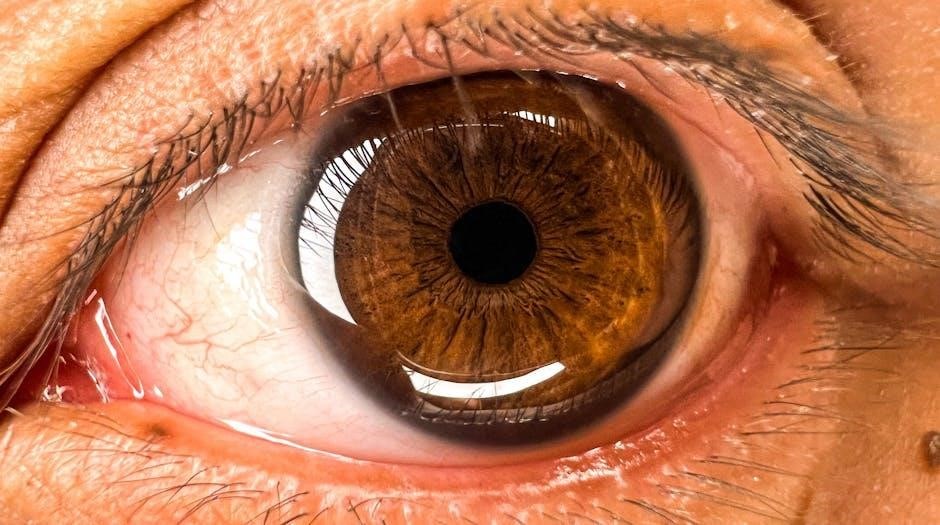
4․2 Comparison with Previous Editions
The 11th edition of Fundamentals of Anatomy and Physiology builds on earlier versions with significant improvements․ Compared to the 10th edition‚ it features enhanced visuals‚ updated scientific findings‚ and a more organized layout․ The clinical applications are now more prominent‚ offering real-world relevance․ Digital tools‚ such as 3D models and interactive simulations‚ surpass previous editions’ resources․ The PDF version is more accessible‚ with improved navigation and search functionality․ While maintaining the core content‚ the 11th edition refines explanations and adds modern learning aids‚ making it a superior choice for students seeking a comprehensive and engaging anatomy and physiology resource․

Educational Philosophy and Approach
The 11th edition emphasizes a student-centered‚ integrative approach‚ blending anatomy and physiology with clinical applications to enhance understanding and prepare learners for real-world scenarios․
5․1 Integration of Anatomy and Physiology
The 11th edition seamlessly integrates anatomy and physiology‚ emphasizing their interdependence․ This approach helps students understand how structures function and adapt within the human body․ By linking anatomical details to physiological processes‚ the text provides a holistic view of bodily systems․ Key concepts‚ such as how the skeletal and muscular systems work together for movement‚ are explored in depth․ This integration is reinforced through visual aids‚ like concept maps and flowcharts‚ enabling learners to visualize connections between form and function․ The text also highlights clinical relevance‚ explaining how anatomical disruptions lead to physiological consequences‚ preparing students for real-world healthcare scenarios․
5․2 Focus on Clinical Applications
The 11th edition emphasizes the practical relevance of anatomy and physiology in healthcare settings․ It bridges theoretical knowledge with real-world scenarios‚ enabling students to grasp how anatomical structures and physiological processes relate to patient care․ Clinical Impact boxes and Case Studies highlight common disorders‚ injuries‚ and treatments‚ illustrating the consequences of anatomical deviations․ This focus helps future healthcare professionals understand the basis of diseases and diagnostic procedures․ By connecting complex concepts to clinical practice‚ the text prepares learners to apply their knowledge in diverse medical situations‚ from trauma and infection to chronic diseases and rehabilitation‚ making it an invaluable resource for aspiring clinicians․
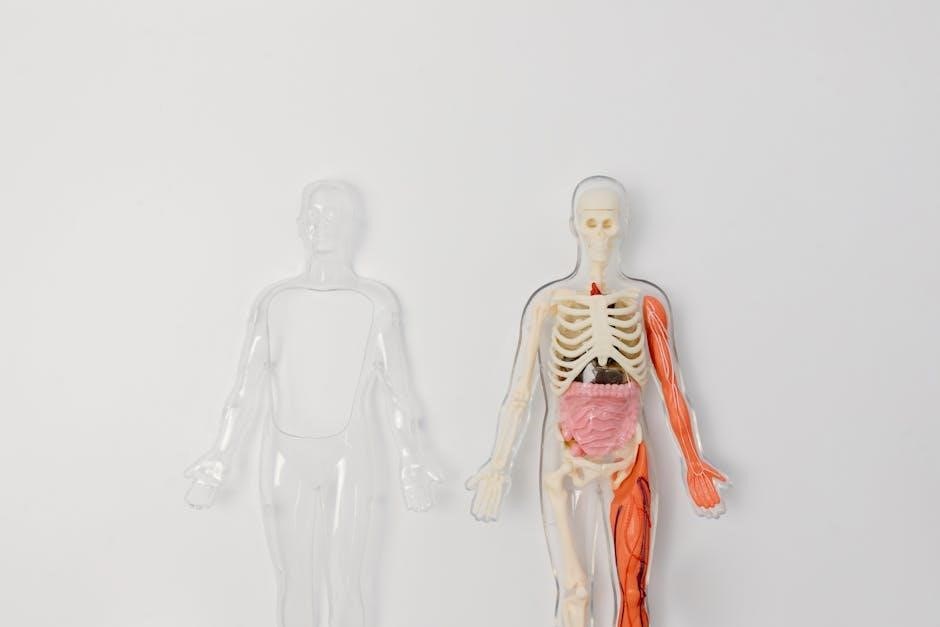
Core Topics Covered
The 11th edition covers essential topics such as body orientation‚ basic chemistry‚ cells‚ tissues‚ skin‚ skeletal‚ muscular‚ nervous‚ circulatory‚ respiratory‚ digestive‚ endocrine‚ urinary‚ and reproductive systems․
6․1 The Human Body: An Orientation
This section introduces foundational concepts of human anatomy and physiology‚ including anatomical terminology‚ body planes‚ and directional terms․ It explores the organization of the body‚ from cells to systems‚ emphasizing homeostasis as a central theme․ The chapter also covers the structural and functional relationships between body systems‚ providing a comprehensive overview for beginners․ Key topics include the levels of organization‚ body cavities‚ and the importance of understanding the interdependence of physiological processes․ This orientation sets the stage for deeper exploration of specific systems‚ ensuring students build a strong foundation for advanced study in anatomy and physiology․
6․2 Basic Chemistry and Biochemistry
This section provides a fundamental understanding of chemistry and biochemistry essential for studying anatomy and physiology․ It covers the structure of atoms‚ molecules‚ and chemical bonding‚ with a focus on biological relevance․ Key topics include the periodic table‚ inorganic and organic compounds‚ pH‚ and buffers․ The chapter also explores biomolecules such as carbohydrates‚ lipids‚ proteins‚ and nucleic acids‚ highlighting their roles in the human body․ Enzyme function and metabolism are introduced‚ emphasizing the interplay between chemical processes and physiological systems․ This foundation enables students to understand the molecular basis of life and its connection to human health and disease․
6․3 Cells and Tissues
This chapter explores the structure and function of cells‚ the basic units of life‚ and how they form tissues․ It discusses cell membranes‚ cytoplasm‚ and organelles‚ emphasizing their roles in metabolism‚ reproduction‚ and response to stimuli․ The section also covers the four primary tissue types: epithelial‚ connective‚ muscle‚ and nervous tissues․ It explains how these tissues organize to form organs and systems‚ highlighting their specialized functions․ The chapter also addresses cell signaling‚ transport of materials‚ and the importance of tissue repair and regeneration․ Understanding cells and tissues is crucial for grasping the physiological processes that sustain life and maintain overall health․
6․4 Skin and Body Membranes
This chapter focuses on the skin and body membranes‚ emphasizing their roles as protective barriers and interfaces with the external environment․ It explores the structure and functions of the skin‚ including the epidermis‚ dermis‚ and hypodermis‚ as well as mechanisms like sweating and thermoregulation․ The section also covers body membranes‚ such as mucous‚ serous‚ synovial‚ and cutaneous membranes‚ explaining their locations and functions․ Key topics include the skin’s role in immunity‚ sensation‚ and vitamin D synthesis‚ as well as the importance of membranes in lubrication‚ protection‚ and fluid balance․ The chapter highlights clinical relevance‚ such as skin disorders and wound healing‚ to illustrate the significance of these systems in maintaining homeostasis․
6․5 The Skeletal System
The skeletal system is composed of bones and cartilage‚ providing structural support‚ protection‚ and facilitating movement․ It is divided into two main categories: the axial skeleton‚ which includes the skull‚ vertebral column‚ ribs‚ and sternum‚ and the appendicular skeleton‚ comprising the upper and lower limbs‚ shoulder‚ and pelvic girdles․ This chapter details the functions of the skeletal system‚ such as protecting internal organs‚ producing blood cells‚ and storing minerals․ It also explores the types of bones‚ including long‚ short‚ flat‚ irregular‚ and sesamoid bones‚ and discusses joints and their classifications‚ emphasizing their role in allowing movement and maintaining posture․ The skeletal system’s role in overall health and mobility is highlighted․
6․6 The Muscular System
The muscular system consists of three types of muscles: skeletal‚ smooth‚ and cardiac․ Skeletal muscles‚ attached to bones‚ enable voluntary movement and maintain posture․ Smooth muscles‚ found in internal organs‚ function involuntarily‚ aiding processes like digestion․ Cardiac muscle is exclusive to the heart‚ ensuring rhythmic contractions․ This chapter explores muscle structure‚ including fibers‚ tendons‚ and ligaments‚ and explains how muscles work with the nervous system to control movement․ It also covers muscle functions‚ such as producing body heat and protecting organs․ The importance of exercise and proper nutrition for muscle health is emphasized‚ along with common disorders like muscular dystrophy and strains․ The chapter provides a comprehensive understanding of muscle anatomy and physiology․
6․7 The Nervous System
The nervous system is a complex network responsible for controlling and coordinating body functions․ It consists of the central nervous system (CNS)‚ including the brain and spinal cord‚ and the peripheral nervous system (PNS)‚ which includes nerves and ganglia․ The CNS processes information‚ while the PNS transmits signals between the CNS and the body․ This chapter covers neural structure‚ from neurons and synapses to reflexes and sensory pathways․ It explains how the nervous system regulates voluntary and involuntary actions‚ such as movement‚ sensation‚ and autonomic functions․ The role of neurotransmitters and the autonomic nervous system in maintaining homeostasis is also highlighted‚ along with clinical applications in understanding neurological disorders․
6․8 The Circulatory and Respiratory Systems
The circulatory system‚ also known as the cardiovascular system‚ transports blood throughout the body‚ supplying oxygen and nutrients while removing waste products․ It consists of the heart‚ arteries‚ veins‚ and capillaries․ The respiratory system‚ responsible for exchanging oxygen and carbon dioxide through breathing‚ includes the nose‚ trachea‚ bronchi‚ and lungs․ This chapter explores the structure and function of these systems‚ including blood composition‚ circulation pathways‚ and gas exchange mechanisms․ It also covers the regulation of heart rate‚ blood pressure‚ and breathing‚ emphasizing their interdependence in maintaining homeostasis․ Clinical applications‚ such as understanding hypertension and respiratory disorders‚ are also addressed․
6․9 The Digestive and Endocrine Systems
The digestive system processes food into nutrients‚ while the endocrine system regulates bodily functions through hormones․ The digestive system includes the mouth‚ esophagus‚ stomach‚ small and large intestines‚ liver‚ pancreas‚ and gallbladder‚ working together to break down food into absorbable nutrients․ The endocrine system‚ comprising glands like the pituitary‚ thyroid‚ adrenal‚ pancreas‚ ovaries‚ and testes‚ secretes hormones that control metabolism‚ growth‚ and reproductive processes․ This chapter details the structure‚ function‚ and interplay of these systems‚ including nutrient absorption‚ blood sugar regulation‚ and hormone interactions․ Clinical insights into disorders like diabetes and digestive conditions are also provided‚ enhancing understanding of their roles in overall health․
6․10 The Urinary and Reproductive Systems
The urinary system‚ comprising the kidneys‚ ureters‚ bladder‚ and urethra‚ filters waste and excess fluids from the blood‚ producing urine․ The reproductive system‚ including the ovaries‚ testes‚ uterus‚ and prostate gland‚ is responsible for producing sex hormones and enabling reproduction․ This chapter explores the structure and function of these systems‚ their interconnection‚ and their roles in maintaining homeostasis․ Key topics include kidney function‚ urine formation‚ hormonal regulation‚ and the process of fertilization․ Clinical correlations‚ such as kidney stones and hormonal imbalances‚ are also discussed to provide a comprehensive understanding of these vital systems and their importance in human health․
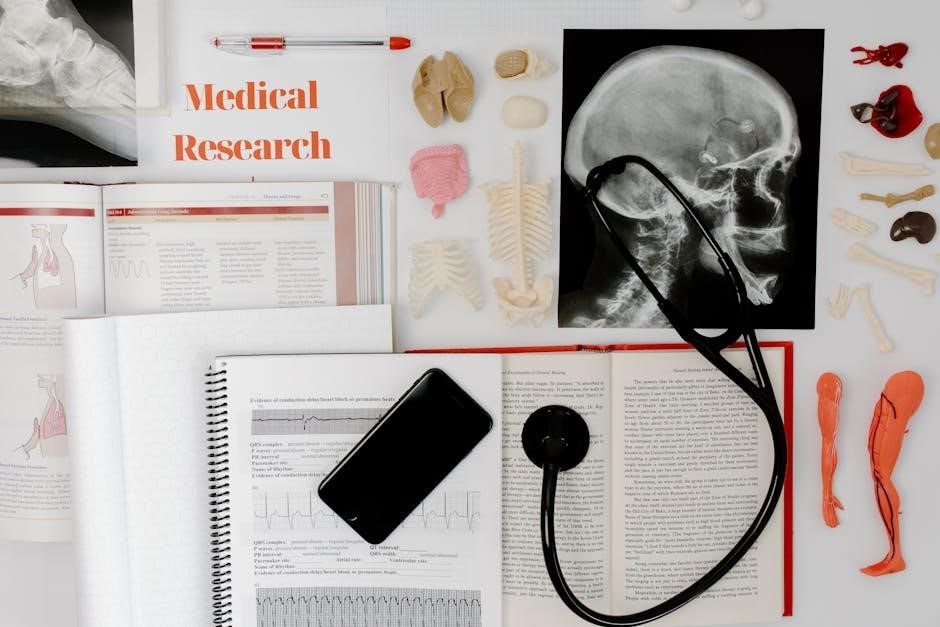
Supporting Resources
The 11th edition provides extensive supplementary materials‚ including test banks‚ study guides‚ and instructor resources‚ to enhance learning and teaching effectiveness for both students and educators․
7․1 Test Bank and Study Guides
The 11th edition offers a comprehensive test bank with multiple-choice questions‚ true/false statements‚ and lab practicals to assess student understanding․ Additionally‚ study guides provide in-depth concept reviews‚ interactive exercises‚ and self-assessment tools․ These resources help students master complex topics and prepare for exams effectively․ The test bank is designed to align with chapter content‚ ensuring focused study sessions․ Study guides also include anatomical labeling exercises and case studies to enhance practical application of knowledge․ Both resources are tailored to support active learning and reinforce key concepts‚ making them invaluable for academic success in anatomy and physiology courses․
7․2 Instructor Resources and Teaching Modules
The 11th edition provides instructors with a wealth of resources to enhance teaching effectiveness․ These include PowerPoint slides‚ detailed lecture outlines‚ and customizable lesson plans․ Teaching modules are designed to integrate seamlessly with course content‚ offering flexible options for classroom delivery․ Additionally‚ instructors gain access to an image bank of anatomical illustrations and tables for use in presentations or handouts․ A comprehensive instructor’s manual is also available‚ featuring tips for engaging students and managing classroom discussions․ These resources empower educators to deliver a dynamic and structured learning experience‚ ensuring students achieve a deep understanding of anatomy and physiology concepts․
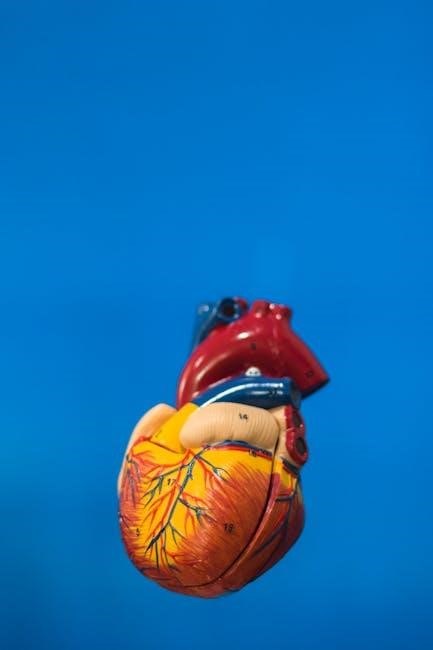
Availability and Formats
The 11th edition is available in hard copy‚ e-book‚ and PDF formats‚ accessible through major online retailers and academic bookstores worldwide․
8․1 PDF and Digital Versions
The 11th edition of Fundamentals of Anatomy and Physiology is widely available in PDF and digital formats‚ offering flexibility for modern learners․ Students can access the full textbook on platforms like Amazon‚ Pearson‚ or through their institution’s library․ The PDF version is compatible with smartphones‚ tablets‚ and laptops‚ allowing easy portability and study on the go․ Digital versions often include interactive features such as zoomable images‚ searchable text‚ and cross-references‚ enhancing the learning experience․ This format is particularly popular among students due to its convenience and cost-effectiveness compared to hard copies․ ISBN-10: 013480656X ensures easy identification for purchase or download․
8․2 Hard Copy and E-Book Options
The 11th edition of Fundamentals of Anatomy and Physiology is available in both hard copy and e-book formats․ The hard copy provides a traditional learning experience‚ with high-quality binding and full-color illustrations․ It can be purchased through major retailers like Amazon or directly from Pearson․ E-book versions are also accessible‚ offering digital convenience and compatibility with e-readers and tablets․ Many students opt for the e-book due to its portability and accessibility across multiple devices․ Both formats ensure comprehensive coverage of the material‚ with the hard copy ideal for hands-on studying and the e-book suited for on-the-go learning․ ISBN-10: 013480656X is available for both options․

Reviews and Reception
The 11th edition has received positive reviews for its clear explanations and visual aids․ Students praise its accessibility‚ while educators commend its comprehensive coverage․ It has won a Texty Award‚ recognizing its excellence in educational publishing․
9․1 Student Feedback and Ratings
Students have praised the 11th edition for its engaging presentation and clarity․ Many highlight the improved visuals and practical examples‚ which enhance understanding․ The integration of digital tools has been particularly well-received‚ making study sessions more interactive․ Feedback suggests the textbook caters to diverse learning styles‚ with clear explanations that simplify complex concepts․ Ratings on platforms like Amazon and Google Books consistently rank it highly‚ with many students recommending it as an essential resource for anatomy and physiology courses․ Instructors also commend its structured approach‚ which aligns well with classroom teaching․ Overall‚ the 11th edition is widely regarded as a user-friendly and comprehensive study aid․
9․2 Academic and Professional Endorsements
The 11th edition has garnered widespread acclaim from both academics and professionals in the medical and biological sciences․ Leading universities and healthcare institutions recommend this textbook for its clarity and depth․ Educators praise its ability to bridge complex concepts with practical applications‚ making it a cornerstone for anatomy and physiology education․ Professionals highlight its relevance to real-world scenarios‚ particularly in clinical settings․ The textbook is often described as a “go-to” resource for both students and practitioners․ Its updated research and visuals have solidified its reputation as a trusted and authoritative source in the field‚ further cementing its place in academic and professional circles․
